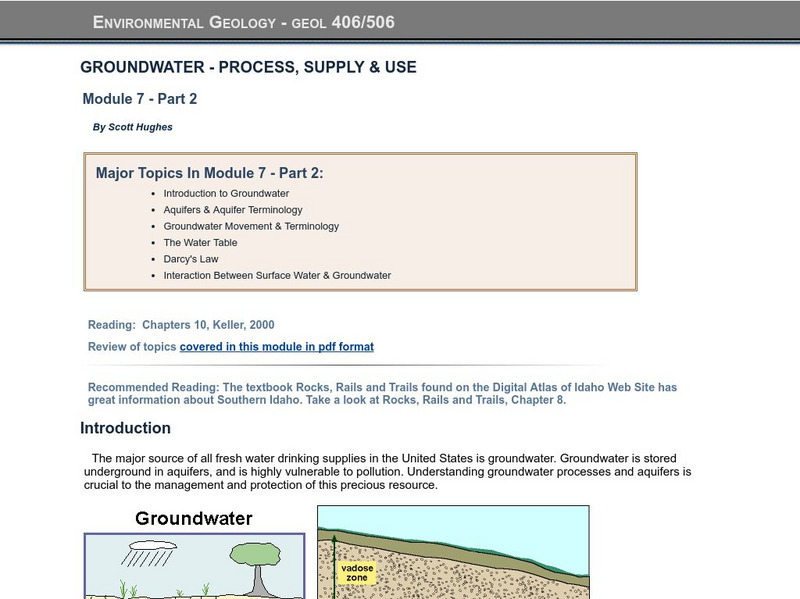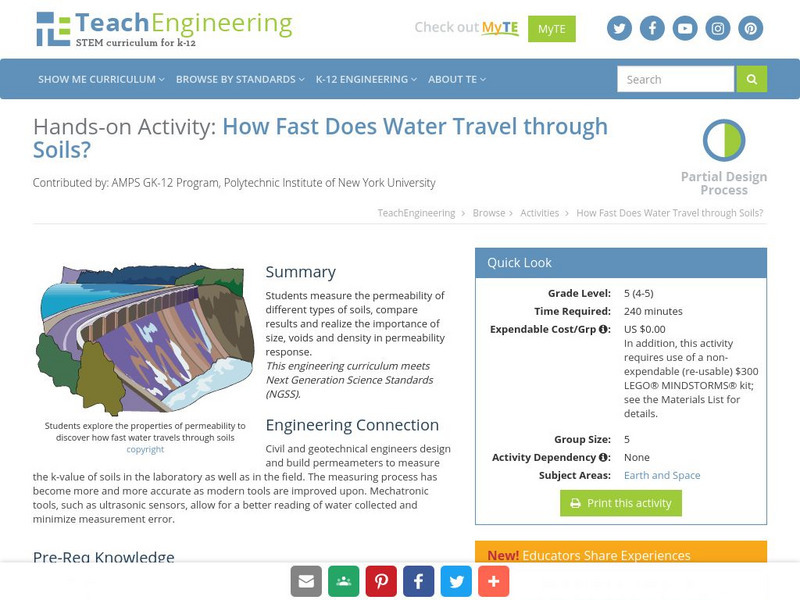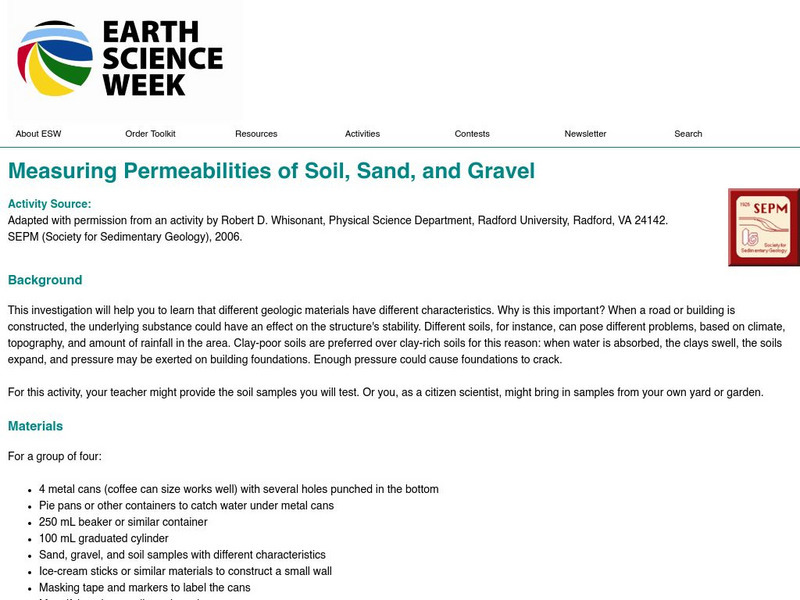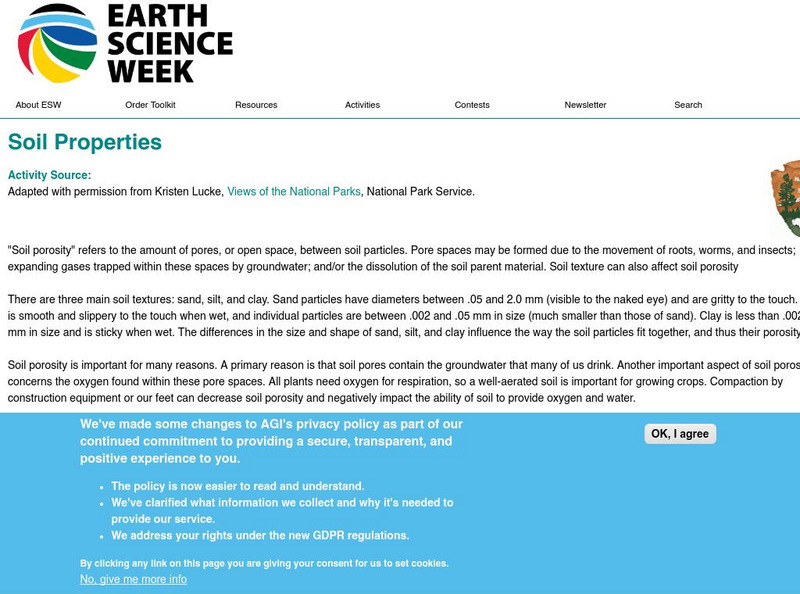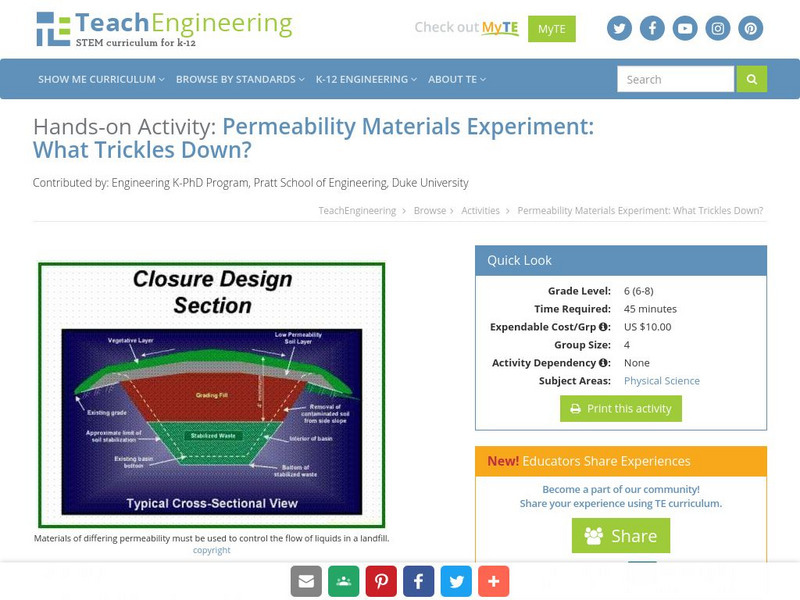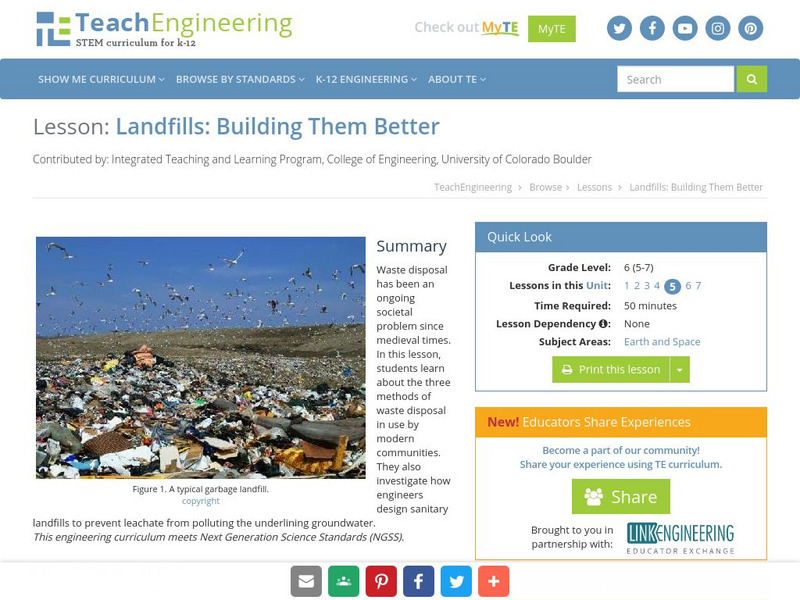Idaho State University
Idaho State University: Groundwater Process, Supply, and Use
Understand the vulnerability to polltuion the supply of drinking water in the United States has. Know what aquifers are and how groundwater is moved. Identify Darcy's Law and know how to apply it.
Science Buddies
Science Buddies: Sand Structure: Measuring Density and Porosity of Sand
For many kids, a day at the beach would not be complete without building a sandcastle. Have you ever wondered how it is that you can pack sand into a mold for a sandcastle? Do some kinds of sand pack better than others? This project will...
TeachEngineering
Teach Engineering: How Fast Does Water Travel Through Soils?
Students measure the permeability of different types of soils, compare results and realize the importance of size, voids and density in permeability response.
TeachEngineering
Teach Engineering: The Other Water Cycle
For students that have already been introduced to the water cycle, this instructional activity is intended as a logical follow-up. Students will learn about human impacts on the water cycle that create a pathway for pollutants beginning...
Science Buddies
Science Buddies: Porosity
Soils are made of particles of different types and sizes. The space between particles is called pore space. Pore space determines the amount of water that a given volume of soil can hold. Porosity is the percentage of the total volume of...
American Geosciences Institute
American Geosciences Institute: Earth Science Week: Measuring Permeabilities of Soil, Sand, and Gravel
This investigation will help students learn that different geologic materials have different characteristics.
American Geosciences Institute
American Geosciences Institute: Earth Science Week: Soil Moisture
This set of activities introduces students to the basic properties and measurements of soil water, and how the global distribution of soil moisture is monitored.
American Geosciences Institute
American Geosciences Institute: Earth Science Week: Soil Properties
Students investigate soil porosity by building a model using the three main soil textures: sand, silt, and clay.
TeachEngineering
Teach Engineering: How Full Is Full?
During this activity, students will learn about porosity and permeability and relate these concepts to groundwater flow. Students will use simple materials to conduct a porosity experiment and use the information to understand how...
TeachEngineering
Teach Engineering: What Trickles Down?
Permeability is the degree to which water or other liquids are able to flow through a material. Different substances such as soil, gravel, sand, and asphalt have varying levels of permeability. In this activity, students will explore...
TeachEngineering
Teach Engineering: Landfills: Building Them Better
Waste disposal has been an ongoing problem since medieval times. Environmental engineers are employed to develop technologies to dispose of the enormous amount of trash produced in the United States. In this lesson, learners will learn...
Cornell Lab of Ornithology
Habitat Network: Pavement or Gravel
Find out how gravel and pavement can be beneficial to a backyard ecosystem.
Other
Garden With Insight: Porosity
A good description of soil porosity and how it is measured. There are links to mixing soil, aerating soil, and soil settling with rain.
US Geological Survey
Usgs: Ground Water Aquifers
Resource is a brief explanation of an aquifer and how they work. This article also touches upon artesian wells. A picture and a fun activity to illustrate the concept of an artesian well are included. Click Home to access the site in...
American Geosciences Institute
American Geosciences Institute: Earth Science Week: Groundwater Movement
Learners learn how water moves through rock materials such as sand, gravel, and clay.
Energy4Me
Energy4me: Reservoirs and Production
The students will learn that porosity refers to the percentage of holes (pores) in the rock. Permeability is the ability of fluids to travel through porous rocks. If a well is to be successfully produced, the reservoir must have...


